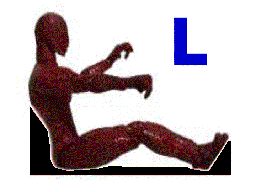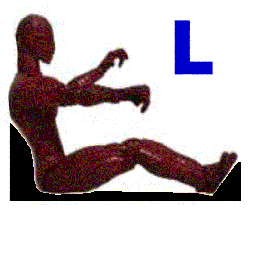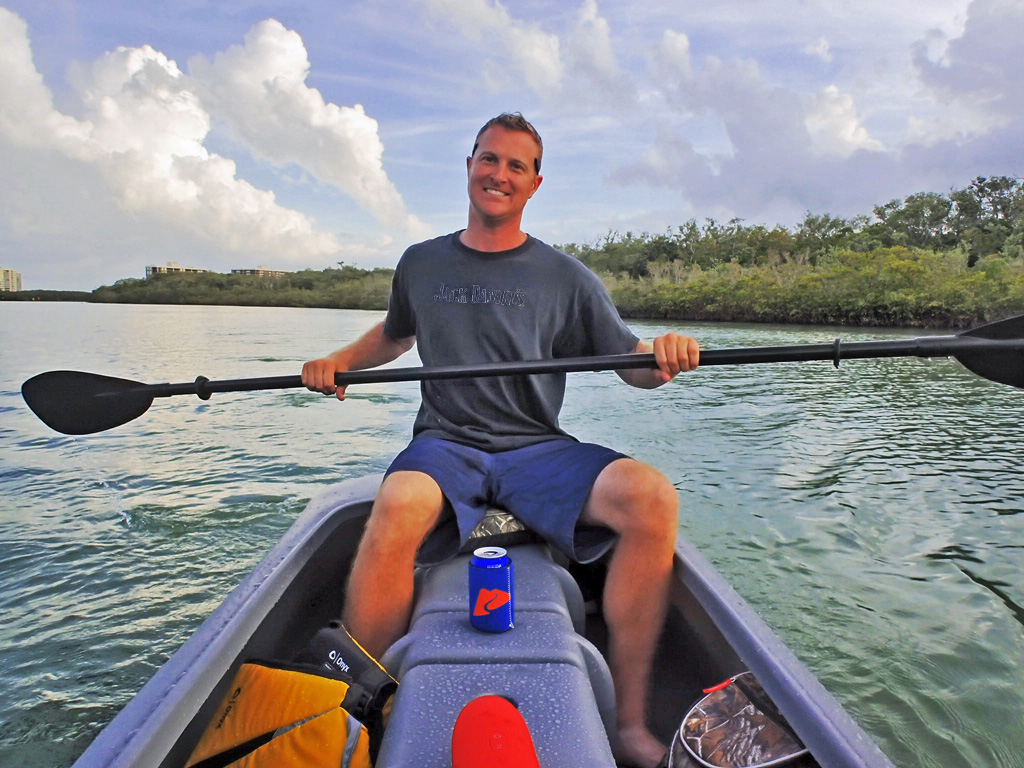Kayaking With No Back Pain: Biomechanical and Ergonomic Solutions in Kayak Design
Back problems are the number one source of disability in the United States, and one of the main reasons why many people do not engage in kayaking and kayak fishing, or drop out from these activities after they realize that they cannot enjoy them.
This article defines the causes of back pain and discomfort that most people feel when paddling kayaks and fishing from them. It also explains how Wavewalk’s patented invention solves these problems, and why people who paddle these kayaks and fish out of them feel neither back pain nor any other discomfort after long hours, including people with various disabilities, back problems and excess weight, as well as elderly people.
CONTENT
- Defining the problem
- What causes the problem
- Search in the right direction
- Engineering the optimal solution
- The riding posture
- The benefits of super stability
- Casting and fighting fish
- The cockpit
1. Defining The Problem
Have you ever fished out of a kayak? If you did, you’ve probably noticed that something is wrong… Simply put, you weren’t feeling comfortable, and you may even experienced pain in your back and legs, and after some time, all you could wish for was to get out of that kayak as soon as possible, even if the fish were biting…
The problem you’ve experienced is simple, and sooner or later anyone who paddles kayaks and fishes from them faces it: Spending long hours
paddling and fishing in or on top of an ordinary kayak, whether it’s a sit-in, hybrid or sit-on-top (SOT) inevitably causes some circulation problems and leg numbness, occasional cramps, pain in your lower back, and often fatigue and discomfort in your shoulders and neck.
In fact, kayaking is so closely associated with back pain that kayakers commonly appear in TV ads for back painkillers and pain relief patches.
After you begin seeking information about your problem and advice on ways to solve it, you realize that the only thing that really works is paddling back to shore, standing up, and performing the exercises that physiotherapists recommend for kayakers.
In other words, there is no gear that you can outfit your ordinary kayak with that can provide an effective and long lasting solution to any of these symptoms, because they occur as a result of you being seated in the L position – the traditional sitting position in kayaks,
with your legs stretched in front of you while pushing your back against your seat’s backrest.
2. What Causes this Problem?
Being Seated In The Traditional, L Kayaking Position
The problem is caused by a combination of two things:
1. Being seated in a non ergonomic position to start with, and
2. Being unable to switch to other positions and release the stress that builds up in the critical pressure points in your body, especially in your legs and lower back.
Have you ever asked yourself why is it that the traditional, L kayaking position is used only in ordinary kayaks and in no other land, snow or water equipment? The answer is that it’s because although the L position is the worst for you it’s simply the only one that ordinary kayaks can offer.
Double Trouble: The Combined Effect of Horizontal and Vertical Pressure on Your Lower Back:
 Figure 1. Horizontal Pressure
Figure 1. Horizontal Pressure
Figure 1 on the left shows the horizontal pressure that your legs exert on your lower back in the traditional L position used in all ordinary kayaks including both sit-in (SIK) and sit-on-top (SOT).
The pressure points in the lower back region can cause irritation and inflammation of the sciatic nerve (sciatica) felt as pain traveling from the lower region of your back down across your lower thigh.
Foot braces and other support for your feet actually increase the horizontal pressure that your legs exert on your lower back.
The back support and foot braces may hold you in your torso in place and prevent you from falling backwards or slipping downward, but they also limit your freedom of movement, increase pressure on your lower back, cause leg numbness and cramps and result in increased fatigue.
Native people of the Arctic circle who were the first to make and paddle kayaks used neither back rests nor foot braces simply because they were accustomed since infancy to sitting on the floor with their legs stretched forward, unlike us modern Westerners who lose this ability in early childhood when we learn to sit on chairs.

Figure 2. Vertical Pressure (Weight)
Figure 2 on the left shows the heavy vertical
pressure (weight) applied on the lower part of your spine when you’re seated in the traditional L kayaking position.
The same sensitive area in your spine that’s pressurized horizontally by your legs pushing on it is being pressurized even more by the combined weight of your torso and thighs, that is nearly all your body weight.
Your legs are prevented from supporting your body weight in this position.
In addition, sitting in the L position without being able to change your body position increases your fatigue and discomfort, and reduces both performance and fun.
Cushioning your seat doesn’t really solve any of these problems since all it can do is spread the pressure from a single point to a wider
area, but the combined pressure is still there and it keeps working on your lower back all the time. Sooner or later you feel very
uncomfortable, and sometime it’s too late since you’ve already been injured.
Kayaking in the L position with no adequate support for either back or feet is not a sensible solution for modern anglers and paddlers who have to spend hours kayaking and fishing from this low and uncomfortable position.
Food for thought
- If you had to perform some hard work or other physical activity in a position of your choice, would you even consider doing it sitting with your legs stretched forward in the L kayaking posture?…
- Do you fish or do you know anybody who fishes seated in this position from shore or from any other type of fishing boat?
-The answer to both questions is Absolutely Not. Never. No Way.
More food for thought
Airplane coach seats are fairly comfortable – certainly more than regular kayak seats, but why is it that after some time most people feel uneasy sitting in them? The answer is that the limited space makes it difficult for you to change positions, which leads to the buildup of discomfort and fatigue to a point where many people feel they must stand up and stretch, and those who can afford it promise themselves to fly first class next time – if only for the extra legroom.
Not all damages are felt immediately.
Sometimes it takes years for the damage to accumulate, and by then it might be too late to fix it. This is true for back and shoulder problems.
Read more about kayaking back pain and leg numbness »
3. Search in the Right Direction
What do cross-country motorbikes, mountain bikes, horses, snowmobiles, all-terrain vehicles (ATV) and personal watercraft (PWC) have in common? It’s the fact that their user operates them in the Riding Position.
And what do skiing, surfing, water skiing, dog sledding, snowboarding, windsurfing, skating and skateboarding have in common? -The Standing Position.
This is simply because the Riding and Standing positions are the best for you in both ergonomic and biomechanic terms, which means they offer best control and more power, and result in less fatigue and injuries.
When we need to make long efforts during motion we have more available power and better control standing or sitting with our legs lower than our upper body (biomechanical advantage), and we also feel more comfortable and less tired this way (ergonomic advantage).
4. Engineering the Optimal Solution
Freedom to Choose = Less Fatigue = Enhanced Comfort = More Fun and Healthier Paddling and Fishing
Only the Wavewalk kayak solution departs radically from the L position and offers a new, comprehensive and effective approach to all ergonomic and biomechanical issues in paddling and paddle fishing.
Wavewalk’s patented kayaks redistribute buoyancy from the boat’s longitudinal axis all the way to its two sides, and thus offers maximal support to the user’s balancing, control, steering, propulsion and fishing efforts.
The central part of the Wavewalk Kayak, its ‘backbone’, which joins the two hulls, is shaped like a long, 15″ high saddle.
Wavewalk kayakers can move back and forth along the saddle, according to their need (e.g. tandem, surfing, paddling in strong wind, launching, etc.). They can also switch anytime between several ergonomic positions
5. The Riding (Mounted) Position
The Natural Position
Riding is the most stable, comfortable and powerful paddling and driving position, and it offers best control over your boat and the most leverage on your paddle.
In the Riding position your thighs, legs and feet are positioned directly below your body and take active part in all your efforts: Balancing, Control and Paddling.
Note that your legs support your upper body from both sides, and your feet are in a direct vertical line below your body.

For Fishing: Riding is the preferred position, rivaling only with standing. When you cast riding you have more power than when casting in the sitting position.
Riding a Wavewalk Kayak is similar to mounting a pony:
Your upper body rests on the saddle and your thighs hold its sides, while each foot rests firmly on the bottom of a hull, as it would in a stirrup.
This position is similar to the riding position used in other high performance vehicles such All Terrain Vehicles (ATV), Snowmobiles, and Jet Skis.
Watch this slow-motion demo video of the Riding position in the W500, a smaller version of the W700:
Sitting
Sitting means having your legs positioned in front of your body. Both the W700 and S4 allow for sitting at all times, even in choppy water.
Standing
The Stand Up Kayak – For Real
Unfortunately, stand up paddling is often described as a feature offered by many kayaks and stand up paddle boards out there, but nothing could be further from the truth – In fact, when it comes to normal paddlers and anglers, who are neither lightweight nor extremely athletic, only a Wavewalk kayak can offer the possibility to paddle and fish standing up in comfort and confidence, and only a Wavewalk kayak offers a critical safety feature in the form of a 15″ high saddle to fall on in case you happen to lose balance.
To understand what standing up in a kayak really means from all aspects, including ergonomics, safety, stability and balance, go to this website’s Stand Up Paddling and Fishing section »
You can paddle on both sides of the boat or just on one side- in parallel and with a J stroke.
After a little practicing you can try to paddle standing in moving water.
6. Super Stability
Nothing Compares
Stability is key to comfort and good ergonomics. The patented Wavewalk Kayaks offer unmatched stability through a unique combination of three factors:
- The boat’s buoyancy is sensibly distributed along its sides, instead of being wasted along its central, longitudinal axis.
- The passengers make natural use of their legs and feet to balance themselves by shifting their weight sideways, from one leg to another, and they apply this weight directly to the bottom of the hulls – below waterline, thus creating an effect of ‘dynamic ballast’.
- The immersed profiles of the boat’s twin hulls act as multiple ‘Hard Chines’, thus offering maximal lateral resistance, and unmatched initial (primary) stability.
7. Casting and Fighting Fish
Wavewalk’ kayaks offer you the ability to throw to longer distances, which presents two advantages:
1. Being able to cover more water from a stationary position before you need to move your kayak
2. Some fish species can sense the presence of your kayak nearby and therefore are better caught from a distance.
For more information visit our website’s Shallow Water Fishing section »
When fighting powerful fish you want to be in full control of your kayak, and Wavewalk’s kayak offer you all the means for it.
8. The Cockpit – A Place To Be In, And Work In
Your kayak’s cockpit has other functions besides protecting you and offering you optimal comfort. It is also a workplace in which you store your gear and handle it. In W kayaks all the gear you need is within arm’s reach, and there’s no chance of it going overboard since in case it slips out of your hand it would end at the bottom of one of the hulls, where it’s easy for you to find and reach it.
Can I outfit the Wavewalk kayak cockpit with a seat on top of its saddle?
Most Wavewalk kayakers don’t add anything to their Wavewalk kayak’s saddle, because they find it perfectly comfortable.
Some people cover the saddle with a blanket or a thin foam mattress.
Adding a kayak seat to the Wavewalk kayak saddle is easy, but not many people do it.
You can simply drop a plastic chair or a lawn chair in the cockpit.
Additional Reading
- What Is kayak Back Pain, And What Does It Mean For You? »
- Paddle VS. Pedal Drive in Common Fishing Kayaks »
- Lumbar Spine and Kayak Back Pain »
Do you have any questions for us?

